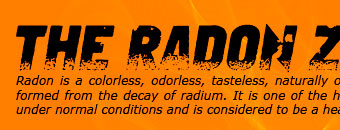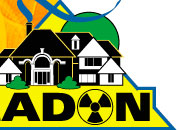Latest News
»Agreement could place tougher limits on radon
SEPTEMBER 8, 2009
Agreement could place tougher limits on radon
Lawsuit settlement forces EPA to review emissions restrictions
by Katie Burford
Herald Staff Writer
Article Last Updated; Monday, September 07, 2009
An agreement reached between the Environmental Protection Agency and plaintiffs in a lawsuit could result in stronger limits on radon emissions from uranium mills, including a proposed operation near Naturita, between Durango and Grand Junction.
Colorado Citizens Against ToxicWaste, representing concerned residents living near the Cotter mill in Cañon City, and WildEarth Guardians filed the suit in 2008, according to a news release from the Cañon City group.
The lawsuit and settlement were reached with the help of the Energy Minerals Law Center, a Durango-based nonprofit.
Travis Stills, an attorney with the law center, said in a phone interview Sunday that the settlement compels the EPA to revisit its limits on the radioactive gas, which haven't been reviewed or changed in 20 years.
It also requires the agency to take various strides to ensure the public is included in the drafting of the new rules.
"With this expanded process, we're hoping to address some serious issues," he said.
Uranium is used as fuel in the generation of nuclear power, which is experiencing a global resurgence in popularity amid the search for alternative energy sources to fossil fuel.
Energy Fuels Corp. has proposed to build and operate a new uranium mill in Paradox Valley not far from Uravan, the site of a former town and mill that later became a Superfund cleanup site.
Company officials have said they will use the best available technology to reduce emissions and avoid groundwater pollution.
While some residents favor the project for its potential economic benefits, others oppose it for fear of environmental damage.
Sharyn Cunningham, co-chair of Colorado Citizens Against ToxicWaste, said she has lived a mile from the Cotter Mill since 1994 and drank water from her two wells for eight years before learning they were contaminated.
Since then, she has become a vocal advocate for tougher regulations and inclusion of the public in the process.
"Often the people impacted or affected ... live in rural areas, lower population areas. The people making the decisions are in Washington," she said.
Stills is hopeful that new knowledge about radon and the ability of the public to participate in the rule-making will result in better environmental safeguards for all uranium operations.
Cunningham, meanwhile, worries about the portrayal of nuclear power as a clean, cost-effective fuel when Colorado's legacy of uranium mining is lingering contamination and billion-dollar cleanups.
"It's a dirty business," she said.





